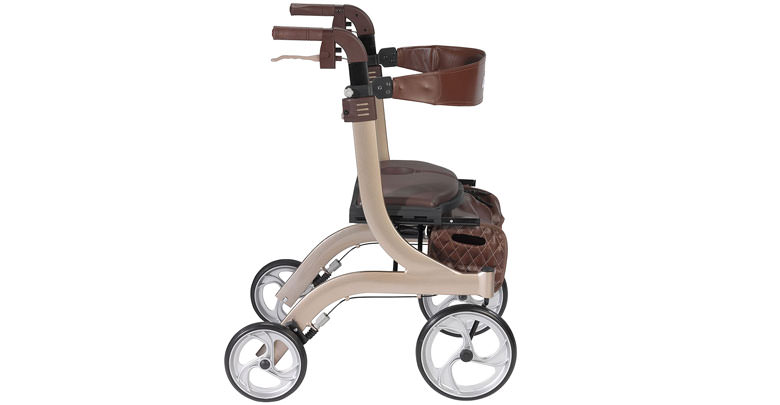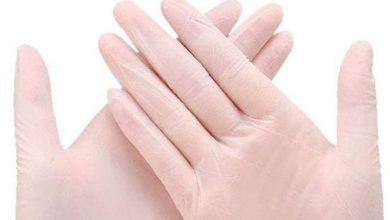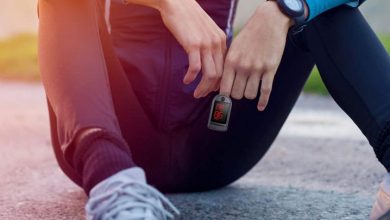
No prejudice: In the US, many people use it without shame. The walker is now a commonly used device, a practical solution for the elderly, and for all those who have reduced mobility (not serious) following an accident or an operation.
Consequently, to regain your autonomy and desire to do and go out, the walker (believe us) is the right solution. In this article, we will focus on folding models, also called ” rollators “, perfect for all those who need help but who do not want to give up a nice walk outdoors, with the certainty of being able to stop and rest at any time, thanks to the presence of a comfortable seat.
Let’s examine the various models and learn how to choose the right one for Black Friday deals.
Walker with seat: What it is and how it works
What is the walker?
The walker is a medical device that is very useful for people with reduced mobility because it supports the body during the walking phase, giving stability and safety to the user.
Thanks to the solid structure with which it is produced, those who use it will be encouraged to walk, feel independent, and maybe leave the house to continue leading a normal social life. In this sense, the safety provided by the walker is physical and gives a contribution and psychological support.
Who uses it?
Not only the elderly but also all those people who have reduced mobility, both temporary and chronic, perhaps due to an accident or following an operation. Its use is recommended if the person feels a marked loss of muscle tone and strength and does not feel safe to move without help to support it. The walker’s focus is precisely the ability to support the weight of the user’s body so that he can maintain an upright position without effort.
The Types of Walkers
Although we will discuss the walker with a seat or rollator in this article, it is good to clarify the various types of walkers to choose the most useful type.
First of all, it is good to make the first distinction between indoor and outdoor walkers:
- Outdoor walker: The outdoor walker is suitable for those who can still move and have good autonomy when leaving the house. They are models with larger wheels, seats, and accessories ideal for shopping, moving, and going out in complete autonomy, feeling safe and stable.
- Indoor walker: Indoor models take up slightly less space than others, are equipped with smaller wheels (sometimes even without wheels), and are recommended for those with decidedly reduced mobility and who stay home almost all the time.
Within these two broad categories, another important distinction can be made regarding the presence or absence of wheels:
-
- Without wheels: a medical device to be used at home. There are no wheels, only rubber feet. The structure is very light, and you must raise it a few centimeters to help you move. Usually used in the hospital by people in temporary recovery. It has the advantage of being the cheapest model, but the disadvantage of not being very robust and not too easy to move for those with particularly limited mobility.
- With two wheels: they have a structure similar to those without wheels, but are equipped with two wheels at the front. They are suitable for those with good stability and only looking for a little help to get around. The wheels are small, and although they are often equipped with a self-locking mechanism, this type of walker is suitable for indoor environments. The advantage is given by the ease of movement of the walker thanks to the wheels’ presence, but it has the disadvantage that it is only suitable for those who already have good stability.
- With four wheels: right outdoor model, equipped with larger wheels, brakes, wheel locks, seat, and accessory compartment. Perfect for those who want to continue going out in total autonomy. It is comfortable, robust, stable, and versatile. If we want to call it, the only disadvantage is that it is more expensive than the other models.
- Axillary: suitable for those with reduced mobility, even in the upper part of the trunk. The person can also lean on it completely, as in other models, without weighing on the wrists.
Features of the walker with a seat
As you may have understood, in this article, we will deal with the models with four wheels, the folding ones with a seat and brakes. They are equipped with four equal, swiveling wheels, similar to a stroller for children, and are ideal for pushing without too much effort.
The structure is very robust and suitable for overweight people, unlike those without wheels, which have a smaller capacity. They are equipped with two ergonomic handles with brakes to place your hands on to push the rollator forward.
The peculiarity of these models is the seat: when the person is tired, he can insert the wheel locking system, place the walker on flat and stable ground, and sit down to rest as long as he wants, without difficulty.
Furthermore, these models are also equipped with baskets to allow the person to insert the bag or other objects so that they can have their hands free and be completely autonomous (the example is when they go shopping). Because most of these models are foldable, they can be easily stored in the trunk of your car, at home, or in the elevator.
Why buy a walker?
The walker makes life easier for people with reduced mobility and, if purchased quickly, allows people to never lose their autonomy. Those with four wheels and seats are easy to use, intuitive, versatile, and suitable for all types of terrain, even those bumpy. With this model of a walker, the person will be encouraged to go out, walk with their acquaintances, and at any time, will be sure to rest without looking for a bar or a bench.
In addition to giving personal security and autonomy, the walker will give the possibility of not losing and developing muscle mass and strength in the lower limbs, and feeling more and more secure in the movements.
Advantages
With the walker, people can feel increasingly safe and autonomous. The walker’s support assists physical effort and can be used at home and outside. If you buy foldable, there will be no difficulty arranging them in the compartment of your car or at home to store them.
Possible problems
The disadvantages are not very many; it is also because it is a medical device designed to improve people’s lives. So that walkers do not become a problem, instead of help, it is good to choose carefully the one that suits your needs.
It is good to evaluate your car’s size, the availability of a place to store it, whether or not it can enter the elevator, and whether it can also be used at home. It is also good to focus on the dimensions of the walker: they are not all the same, and it is good to choose the right one for your body, based on height and weight.
How to use a walker with a seat
Those with no mobility problems will not have major problems learning how to walk with a rollator. On the other hand, the other people, who have reduced mobility, will have to learn to use it, paying attention to movement, but only for the first few times, to become familiar and feel, from time to time, safer and safer.
How to learn to use it
First, bring the rollator closer to where you are sitting: place your hands firmly on the handles and pull the brakes hard. At this point, lean forward and force your arms to stand up. When you have found your balance, start releasing the brakes and take a few steps forward.
Don’t forget to pull on the handles – your support is there. You will also have to learn to sit: before making this movement, do not forget to insert the wheel lock. This will prevent any movement of the walker.
How to choose a walker with a seat
Let’s evaluate the characteristics to ensure you have chosen the right model for your needs.
Dimensions: height and width
The dimensions are the first characteristics to check before buying a walker with a seat. As for the height, it is necessary that the person reaches the seat without effort and that, during the erect use, he can keep his hands on the handles so that the arms are slightly bent.
Most models obviate these problems with some adjustments, especially on the handles. This way, the person can easily adapt the handles to their height to feel even more comfortable. On the other hand, the seat is not always adjustable: before purchasing, also check this factor.
Width is also a factor that should not be underestimated, especially in overweight people who may have difficulty with a seat that is too small or with limited space for the movement of their legs for their size.
Accessories
The presence of baskets or containers that can facilitate the walker’s use should also be considered, since the person can use them for shopping or shopping in complete freedom and autonomy.
Brakes and locks
The presence of brakes and wheel locks is essential for us. During the movement phase, the brakes are used to slow down the walker on uneven ground or feel safer in certain moments, such as, for example, when crossing a pedestrian.
On the other hand, the lock is useful when using the seat: it is necessary to lock the wheels so that the walker does not move when the person sits up and gets up.
Materials
The walker can be made of aluminum or steel: the outdoor models are almost all steel, more robust, and slightly heavier than aluminum.
Maximum capacity
Another important factor is that the maximum capacity is the maximum weight the walker can support. Usually, the capacity varies between 280 and 330 lbs.



